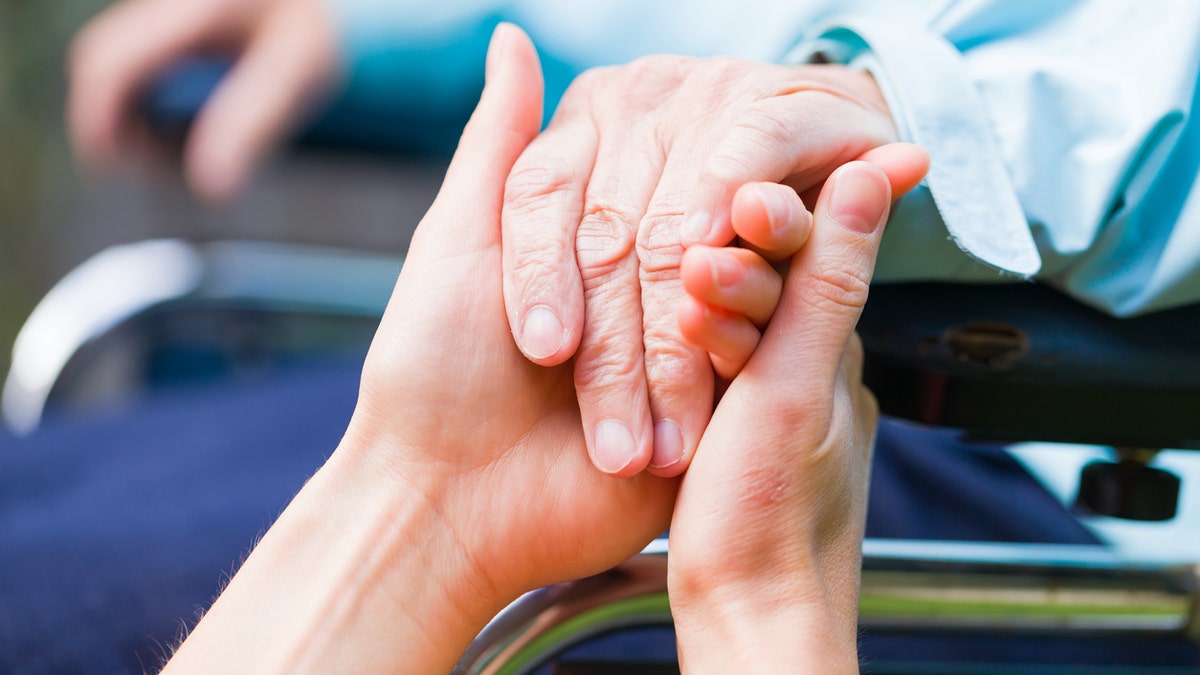
While hospice is available to individuals with six months or less to live, researchers found that for half of the study participants their duration of hospice care was less than 13 days. (iStock)
Hospice centers provide valuable end-of-life care for the elderly.
So, why aren’t more people using these centers?
The Medicare hospice benefit (MHB) was established in 1982 in order to give recipients access to high-quality care near the end of their lives.
But, new research in the Journal of the American Geriatrics Society states that those who utilize the service often do so too late.
The study included 562 individuals, all aged 70 and older with an average age of nearly 87 years.
Of these older adults, only 43 percent of them were admitted to hospice during their last year of life.
MOM FACING JAIL TIME OVER REFUSAL TO VACCINATE SON
While hospice is available to individuals with six months or less to live, researchers found that for half of the study participants their duration of hospice care was less than 13 days.
The authors say underutilization of hospice care can create a burden for healthcare workers, and result in patient suffering.
Why don’t people utilize hospice?
The reason why hospice care isn’t used more frequently is complex.
According to statistics from 2000, only 23 percent of Medicare beneficiaries who died were in hospice care at the time.
The MHB was initially offered for those with end-stage cancer. However, more and people have begun seeking hospice care for noncancer-related ailments.
The problem is that other issues, such as frailty and dementia, may be harder to discern when determining an individual’s eligibility for hospice care.
“It is well documented that the prognostication [predictability] for those patients with a noncancer diagnosis is more difficult and is a complicating factor for physicians and others who refer patients to hospice care,” said John Mastrojohn, executive vice president and chief operating officer of the National Hospice and Palliative Care Organization (NHPCO).
Lead study author, Dr. Thomas Gill, a professor of medicine at Yale University, agreed.
“Cancer tends to have the most predictable course,” he told Healthline, “meaning it is generally easier to predict when someone with cancer is in the last six months of life than someone with another terminal condition.”
“The challenge is even greater for older persons since many die from a combination of different conditions and/or debility, none of which may meet criteria for hospice,” Gill added.
That gets even more problematic when you look further at the results of Gill’s research:
The most common conditions leading to death were frailty and organ failure, not cancer. However, hospice acceptance rates for frailty were the lowest, and for cancer the highest.
Waiting too long
Not only is care jeopardized by condition, but by duration of stay as well.
The median of 12.5 days spent in hospice indicates that even when individuals do utilize the MHB, it is at the last possible moment.
“A large proportion were admitted shortly before they died, which makes it difficult for hospice to optimize its benefits,” said Gill.
Hospice care offers a unique opportunity to individuals who are near death in that it is not intended to cure them.
It is strictly palliative, meaning it is meant to provide comfort and quality of life.
A SINGLE GENETIC GLITCH MAY EXPLAIN HOW ZIKA BECAME SO DANGEROUS
Benefits of hospice care, Mastrojohn told Healthline, include expert pain management, spiritual support, as well as social and physical activities, tailored to the individual.
Hospice also provides service to families through bereavement support to help them deal with the loss of a loved one.
“Hospice is a benefit delivered by clinicians who are expert in the care of those with serious, advanced illness,” said Mastrojohn. “It is my hope individuals would be more open to receiving hospice services so they can maximize the many benefits they need and deserve.”
Changing how hospice is viewed
While this new research helps to highlight the underutilization of hospice care, it does not provide crystal clear answers why.
However, the authors hope that their work will lead to better strategies for addressing those who need hospice care, and getting them enrolled sooner in a program, rather than waiting until the last moment.
But hospice care also represents a difficult dilemma for families, which may help explain why duration of stay is so low.
For some, putting a loved one in hospice care can sometimes be seen as a sign of defeat.
“Some patients and/or families might interpret hospice as ‘giving up,’ but this is clearly not the case,” said Gill.
This article first appeared on HealthLine.com.




















